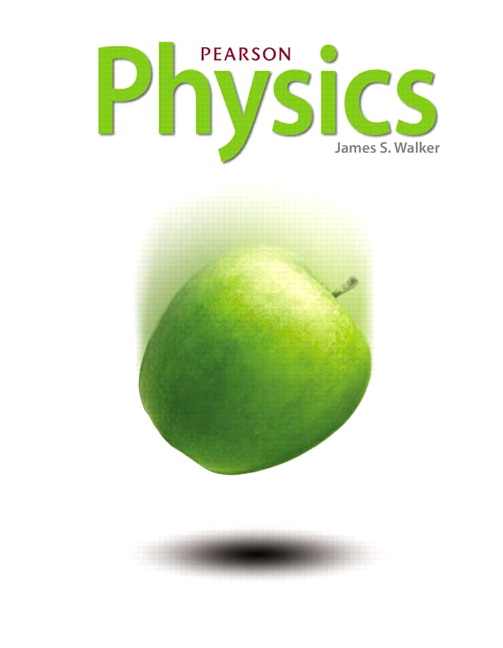
All Solutions
Page 49: Practice Problems
$$
begin{align*}
text{average speed}=dfrac{text{distance}}{text{elapsed time}}\
end{align*}
$$
Rearranging the equation to solve for distance and plugging in the values, we obtain the result:
$$
begin{align*}
text{distance}&=text{average speed}timestext{elapsed time}\
&=4.6 frac{text{m}}{text{s}}times 1.4 text{s}\
&=quadboxed{6.4 text{m}}\
end{align*}
$$
begin{align*}
boxed{text{distance}=6.4 text{m}}\
end{align*}
$$
textbf{Concept:}
$$
Use equation to find the distance we get
$$
textbf{Solution:}
$$
$$
Distance=Avg.,Speed times elapsed,time
$$
Substituting the Numerical values we get…
$$
distance=(4.6frac{m}{cancel{s}})(1.4cancel{s})=color{#4257b2} boxed{bf 6.4m}
$$
distance=6.4m
$$
Using the equation for average speed, rearranging it to solve for distance, and plugging in the values, we get
$$
begin{align*}
text{average speed}&=dfrac{text{distance}}{text{elapsed time}}\
text{distance}&=text{average speed}timestext{elapsed time}\
&=340 frac{text{m}}{text{s}}times 3.5 text{s}\
&=quadboxed{1190 text{m}}\
end{align*}
$$
The distance in kilometers is simply the distance in meters divided by 1000, as a meter is one thousandth of a kilometer,
$$
begin{align*}
boxed{text{distance}=1.190 text{km}}\
end{align*}
$$
To convert $frac{text{m}}{text{s}}$ to $frac{text{km}}{text{h}}$, multiply the speed value by a conversion factor $left(dfrac{3.6 frac{text{km}}{text{h}}}{1 frac{text{m}}{text{s}}}right)$, and to convert seconds to hours, multiply the time value by $left(dfrac{1 text{h}}{3600 text{s}}right)$. Therefore,
$$
begin{align*}
text{distance}&=340 frac{text{m}}{text{s}}cdotleft(dfrac{3.6 frac{text{km}}{text{h}}}{1 frac{text{m}}{text{s}}}right)times 3.5 text{s}cdotleft(dfrac{1 text{h}}{3600 text{s}}right)\
&=1224 frac{text{km}}{text{h}}timesfrac{3.5 text{h}}{3600}\
&=quadboxed{1.19 text{km}}\
end{align*}
$$
In both cases, the final result is the same, but the first approach is more simple and straightforward.
begin{align*}
text{In kilometers:} quad &boxed{text{distance}=1190 text{m}}\
text{In meters:} quad &boxed{text{distance}=1.19 text{km}}\
end{align*}
$$
$$
begin{align*}
text{average speed}&=dfrac{text{distance}}{text{elapsed time}}\
text{distance}&=text{average speed}timestext{elapsed time}\
&=65 frac{text{km}}{text{h}}times 3.2 text{min}cdotleft(dfrac{1 text{h}}{60 text{min}}right)\
&=65 frac{text{km}}{text{h}}timesdfrac{3.2 text{h}}{60}\
&=quadboxed{3.5 text{km}}\
end{align*}
$$
$$
begin{align*}
text{average speed}&=dfrac{text{distance}}{text{elapsed time}}\
text{elapsed time}&=dfrac{text{distance}}{text{average speed}}\
&=dfrac{0.25 text{km}}{65 frac{text{km}}{text{h}}}\
&=quadboxed{0.0038 text{h}}\
end{align*}
$$
When dealing with such small numbers, it’s more intuitive and makes more sense to write the result in appropriate order-of-magnitude units. For that reason, we’ll write the solution for elapsed time in seconds:
$$
begin{align*}
boxed{text{elapsed time}=14 text{s}}\
end{align*}
$$
begin{align*}
textbf{(a)} quad &boxed{text{distance}=3.5 text{km}}\
\
\
\
textbf{(b)} quad &boxed{text{elapsed time}=14 text{s}}\
end{align*}
$$
$$
begin{align*}
text{distance}&=0.060 frac{text{m}}{text{s}}times 1.2 text{min}cdotleft(dfrac{60 text{s}}{1 text{min}}right)+13 frac{text{m}}{text{s}}times 1.2 text{min}cdotleft(dfrac{60 text{s}}{1 text{min}}right)\
&=quadboxed{940 text{m}}\
end{align*}
$$
$textbf{The average speed is the total distance travelled divided by the total time of motion}$
$$
begin{align*}
text{average speed}&=dfrac{text{total distance}}{text{total time}}\
\
\
\
&=dfrac{940 text{m}}{2.4 text{min}cdotleft(frac{60 text{s}}{1 text{min}}right)}\
\
\
\
&=quadboxed{6.5 frac{text{m}}{text{s}}}\
end{align*}
$$
begin{align*}
boxed{text{average speed}=6.5 frac{text{m}}{text{s}}}\
end{align*}
$$
Haven't found what you were looking for?
Search for samples, answers to your questions and flashcards

